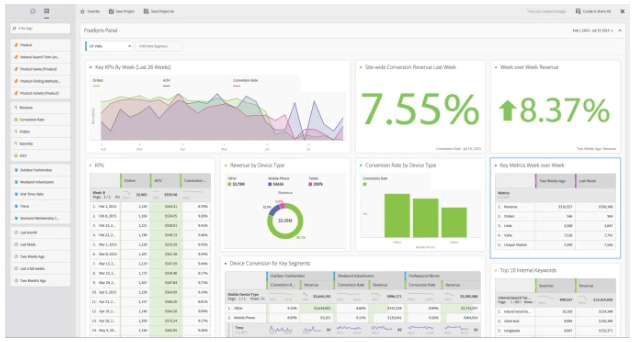For brands looking at data to better understand customer journeys, very few have a full picture.
Teams are having to decode complex interactions across digital and physical touch points, while data is scattered across departments and functions. As a result, teams fall back on incomplete data insights as a proxy, exacerbating the problem with static dashboards and top-line vanity metrics. While progress has been made in linking some disparate systems like CRM and ERP, connecting real-time data across all enterprise data siloes remains a challenge. Brands are using stale insights and legacy analysis tools with little interactivity to inform customer experiences, while millions of transactions happen across websites, mobile, video and more.
Today, Adobe announced Customer Journey Analytics in Adobe Analytics. It taps the power of Adobe Experience Platform, which standardizes and stitches together customer data from across an organization, and opens up new creative ways to understand insights across online, offline and third-party channels. The interactive user interface enables anyone in an organization to work with data, not just the trained data scientist. AI and machine learning through Data Science Workspace in Adobe Experience Platform provide a helping hand with predictive capabilities and automation.

From the start, the team developed the Customer Journey Analytics interface with cues taken directly from Photoshop. Both are rooted in the concept of layers: With Photoshop, images and graphics are sourced, edited and layered on top of one another to create a new visual. In Customer Journey Analytics, the layers are data sets instead. Brands can curate metrics such as orders, conversion and visits—across different channels with Adobe Experience Platform—and drag-and-drop layers of data together to uncover new insights about how customers engage with the brand. It provides many different lenses into the overall customer journey.
Brands such as T-Mobile, The Home Depot, Heathrow, Phillips, Wegmans and Hyatt Hotels use Adobe Analytics regularly to understand digital engagement in real-time. With Customer Journey Analytics, teams could bring in new data sets such as in point-of-sale systems and call centers to produce insights that are better aligned with how consumers interact. It helps to close a creativity gap seen in data analysis as well, empowering individuals to be more inventive in the way they combine, edit and experiment with different layers of data—a creative process that is familiar to any user of Photoshop. Brands can begin to support decision-making with more comprehensive insights and avoid falling one step behind the customer.
With Customer Journey Analytics, brands are able to:
- Answer complex questions: Being able to layer and curate omnichannel data means that brands can compare customer segments, analyze fallout behavior, uncover high performing journeys, and more. Unlike traditional dashboards with limited interactivity, users can dig into layered data sets and present collections of insights for different audiences in real time. In the retail industry, brands can bring together physical stores and e-commerce data and insights. As one example, a brand could uncover the types of digital experiences on specific days that are most likely to drive foot traffic and purchase in offline store—and double down on those efforts.
- Allow anyone in an organization to work with data: Customer Journey Analytics is robust for data scientists, but accessible to a broad set of business users such as a marketer or product manager. A new reporting engine helps foster a more data-driven culture, giving any individual a visual and creative way to query data specific to their role. A hotel chain for instance, could help UI teams understand what contributes to customer fallout on the web. The availability of Query Service though Adobe Experience Platform delivers flexibility for more technical audiences to query data sets using SQL and supports integrations with BI tools such as Microsoft Power BI.
- Leverage the power of AI and ML: With Adobe Sensei, brands can counteract resource constraints that are typical of most data science teams. Pre-built AI/ML models in Adobe Experience Platform can be trained over time to make better predictions on activities happening across the customer journey, suggest recommendations on best next steps or automate cumbersome processes. A subscription service for instance, can begin to see when segments of users are likely to de-activate their membership and the types of content or promotions that can drive better retention.
Adobe also unveiled Cross-Device Analytics in Adobe Analytics. Available as part of Journey IQ, brands are able to understand customers as people and not just devices. Leveraging a private device graph and data from Adobe Experience Platform, behavior from different devices are merged into a single stream, so that brands can better grasp how users engage with brands across devices. In addition to more accurate metrics to inform resource investment, brands can minimize negative and redundant experiences for customers.






